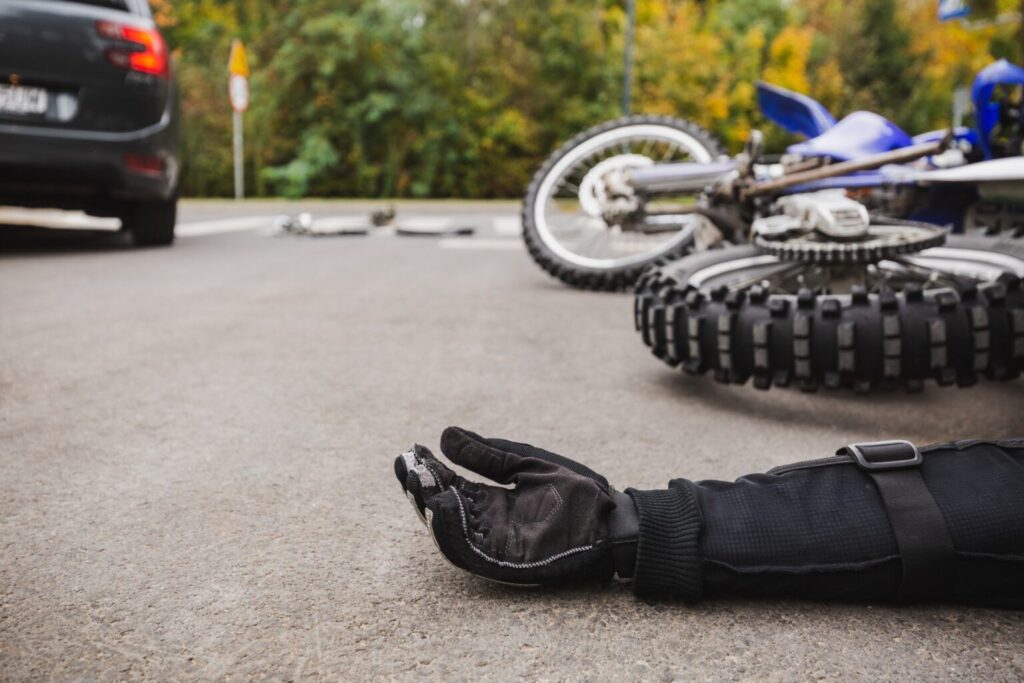Austin’s roads are a study in contrasts, wide interstates like I-35 and MoPac, winding Hill Country routes, and dense downtown corridors filled with delivery vans and distracted drivers. For motorcyclists, that mix can turn a routine ride into a life-altering crash in an instant. This guide breaks down the most common hazards, how liability is decided, and what Texas law offers injured riders. When it’s time to protect your rights, an Austin Motorcycle Accident Lawyer at Applewhite Law Firm knows how to build the case and push for full compensation.
Common causes of motorcycle accidents in Austin
Austin sees a familiar pattern of motorcycle wrecks, but the details matter.
- Left-turn conflicts at intersections: Drivers turning left across oncoming lanes often misjudge a motorcycle’s speed or simply fail to see it. Intersections along South Congress, Lamar, and the I-35 frontage roads are frequent hotspots.
- Distracted driving: Phones, navigation screens, and infotainment systems create deadly seconds of inattention. A driver glancing down rarely processes a slim profile motorcycle in time.
- Speed and aggressive maneuvers: Tailgating, sudden lane changes, and racing to beat a light leave riders with no buffer.
- Impaired driving: Alcohol- or drug-impaired motorists reduce both reaction time and judgment, especially at night and on weekends.
- Blind spots and unsafe merges: Larger vehicles, pickups, SUVs, delivery trucks, hide riders in pillar and mirror blind zones. A quick merge without a head check is all it takes.
- Dooring and parking-lot hazards: In dense areas like downtown and the East Side, a suddenly opened door or a backing vehicle can put a rider on the ground.
- Weather and construction: Sudden rain, loose gravel, steel plates, and uneven surfaces near work zones (common along 183 and 71) are especially treacherous for two wheels.
Behind these scenarios is a recurring theme: motorists “look” but don’t truly register the presence of motorcycles. That perception gap is a legal and evidentiary issue, not just a safety one.
Unique risks riders face compared to other motorists
Motorcyclists operate with far less margin for error than drivers.
- Minimal protection: Without a vehicle frame, airbags, or crumple zones, even low-speed impacts can cause fractures, traumatic brain injuries, or soft-tissue damage that lingers.
- Stability issues: Gravel, potholes, and slick paint lines that a car barely notices can send a motorcycle sliding. Small road defects are proportionally bigger threats to bikes.
- Visibility and conspicuity: A motorcycle’s smaller profile is harder to detect, particularly at dusk or in heavy traffic. Drivers often misjudge distance and closing speed.
- Secondary impacts: A rider can be struck again after an initial fall, by a trailing vehicle or by fixed objects, compounding injuries.
- Bias in the claims process: Some insurers and even jurors assume riders “accept the risk.” Overcoming that bias requires careful storytelling and strong evidence.
Helmet use and quality gear reduce injury severity but don’t eliminate risk. And while lane splitting is common in online debates, it isn’t permitted under Texas law, another factor that can affect fault assessments if a crash involves close-quarters traffic.
Determining liability in motorcycle injury claims
Establishing who’s responsible is a disciplined evidence exercise. Texas follows proportionate responsibility (Texas Civil Practice & Remedies Code, Chapter 33): a rider can recover damages as long as they are not more than 50% at fault, but any award is reduced by their percentage of fault. At 51% or more, recovery is barred.
Key building blocks of liability include:
- Scene evidence: Skid marks, vehicle rest positions, damage patterns, and debris fields help reconstruct speed, direction, and points of impact.
- Digital proof: Traffic cameras, nearby business surveillance, dashcams, and rider GoPros often capture the moments that matter. Quick preservation letters stop footage from being overwritten.
- Vehicle data: Many passenger vehicles store pre-crash data (speed, braking, throttle). When available, it can validate or debunk a driver’s account.
- Witness statements: Eyewitnesses can be inconsistent: contemporaneous 911 calls and body-cam footage can corroborate timing and behavior.
- Expert analysis: Accident reconstruction, human factors, and medical experts translate technical facts into clear causation.
Common fault scenarios include left-turn failures to yield, unsafe lane changes, and rear-end impacts from following too closely. Additional liable parties may include an employer (if a delivery or rideshare driver caused the crash), a bar that overserved an obviously intoxicated patron (Texas Dram Shop liability), a road contractor that created an unreasonably dangerous condition, or even a manufacturer if a component failure contributed. An experienced Austin Motorcycle Accident Lawyer will investigate all angles early, before memories fade and data disappears.
How poor road conditions contribute to accidents
Road defects play an outsized role in motorcycle crashes. Potholes, edge drop-offs, loose gravel, milled pavement, sunken utility patches, and slick thermoplastic lane markings can all trigger a loss of control. Night riding amplifies the risk when hazards aren’t visible until the last second.
When the government is involved, different rules apply. The Texas Tort Claims Act (TTCA) allows certain claims against governmental units for negligent maintenance or dangerous conditions, but with important limits:
- Notice deadlines: Claimants generally must give written notice within six months, and some local charters impose shorter periods. Missing a deadline can end the claim before it starts.
- Damage caps: Liability is capped, commonly up to $250,000 per person and $500,000 per occurrence for bodily injury against a municipality, and lower against some counties.
- “Special defect” vs. ordinary defect: Large, unexpected hazards (like an unbarricaded excavation or a massive hole) can be treated differently than routine maintenance issues, affecting the duty owed and proof required.
Not every hazard is governmental. Private contractors and utility companies can be liable when their work zones lack proper signage or create unreasonably dangerous transitions. Photographs, 311/service records, maintenance logs, and quick site inspections are crucial to tie a crash to a specific condition.
Legal remedies and compensation for motorcycle victims
Texas law provides several avenues for recovery after a motorcycle crash, depending on the facts and available insurance.
- Liability insurance claims: The at-fault driver’s policy is the starting point. Texas minimums often fall short in serious injury cases, which is why underinsured coverage becomes critical.
- UM/UIM, PIP, and MedPay: Uninsured/Underinsured Motorist coverage steps in when the at-fault driver has no or insufficient insurance. Personal Injury Protection (PIP) is offered by default in Texas unless rejected in writing and can cover medical bills and a portion of lost income regardless of fault. MedPay, when purchased, helps with medical expenses but not lost wages.
- Economic damages: Past and future medical expenses, rehabilitation, lost wages, diminished earning capacity, and household or mobility adaptations.
- Non-economic damages: Pain and suffering, mental anguish, physical impairment, and disfigurement, losses that are real, even if not reflected on a bill.
- Exemplary (punitive) damages: In cases of gross negligence or malice, think egregious drunk driving, punitive damages may be available, subject to Texas caps (generally the greater of $200,000 or two times economic damages plus up to $750,000 of non-economic damages: see CPRC §41.008).
- Wrongful death and survival: When a rider is killed, family members may bring wrongful death claims, and the estate can pursue a survival claim for damages the rider suffered before death.
Process matters. Early medical documentation, avoiding recorded statements, and keeping damaged gear and the motorcycle available for inspection can materially improve outcomes. Negotiations resolve many claims, but when liability is disputed or offers undervalue future care, litigation and trial may be the right path. Applewhite Law Firm combines thorough investigation with clear, persuasive presentation, often the difference between a quick, inadequate settlement and a result that actually funds recovery.

